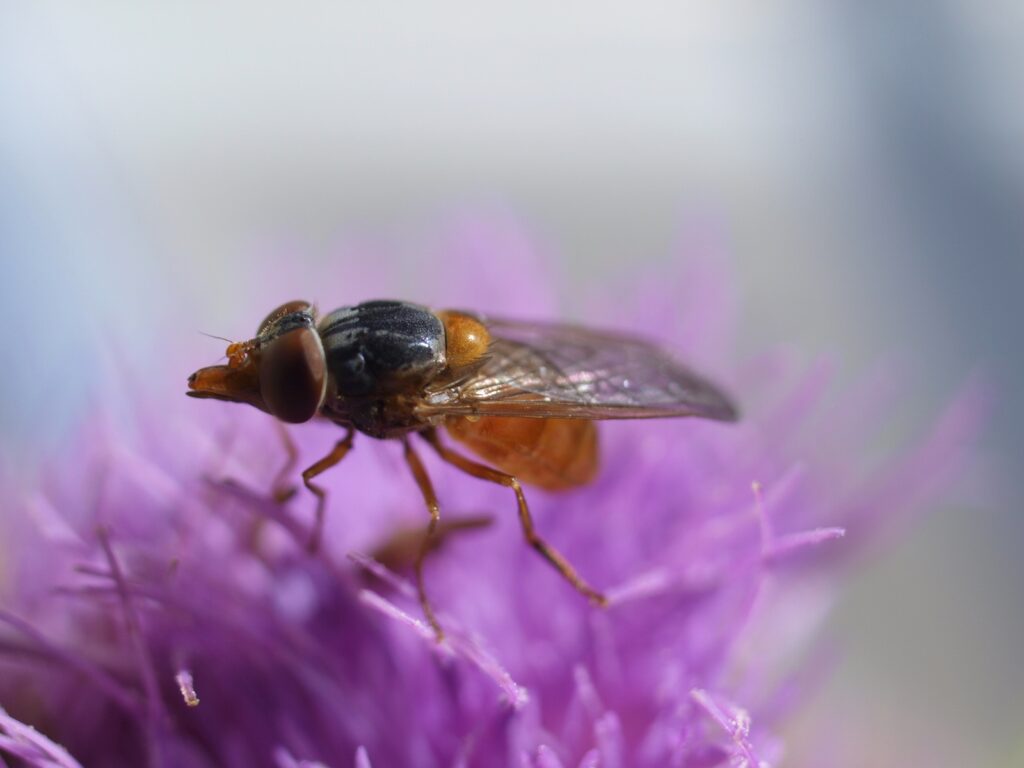
While this could be a one-off i.e. the work of a single confused female, I was delighted to discover three Rhingia rostrata pupae in one of my grass-filled Lagoon’s pupation tray! It was discovered among many Myathropa florea pupae, and due to it’s small size and shape, could easily be overlooked (see images below).
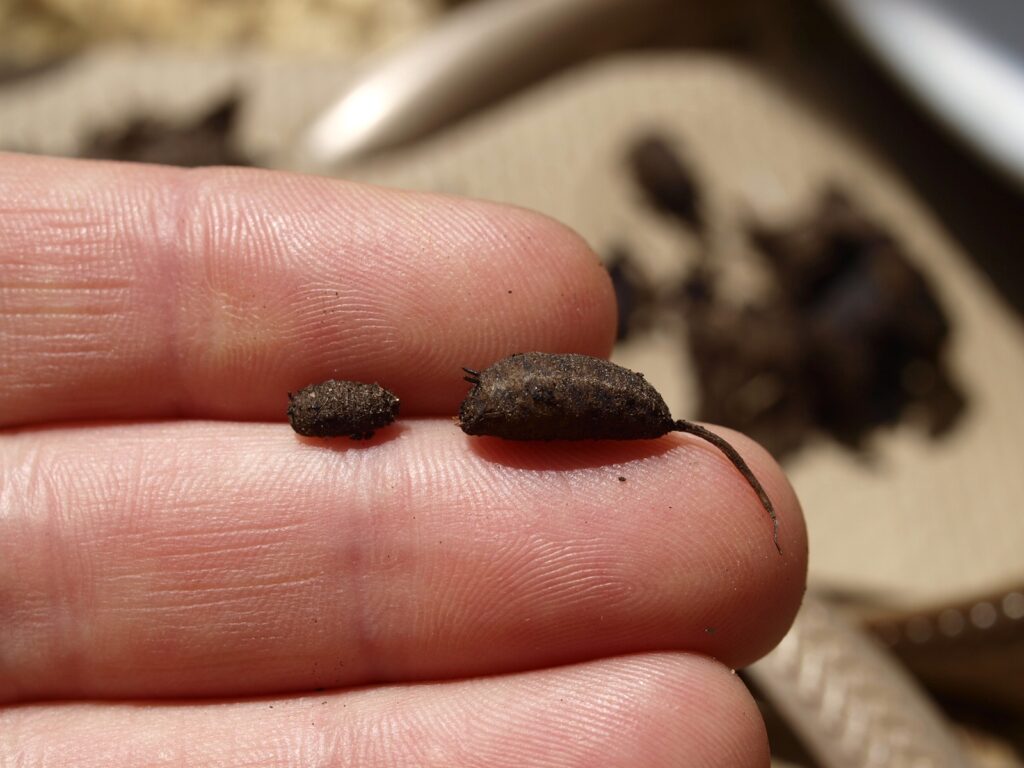
As you can see, R. rostrata‘s much smaller pupa, lacking a breathing tube, could very easily be missed when searching pupation trays, so DO try and look out for these! These were collected on 23rd June.
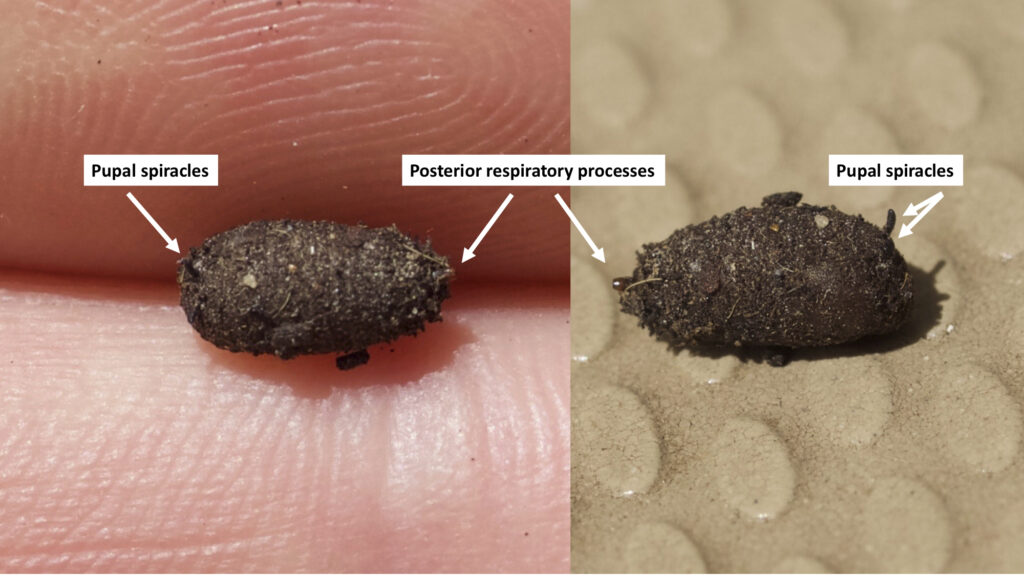
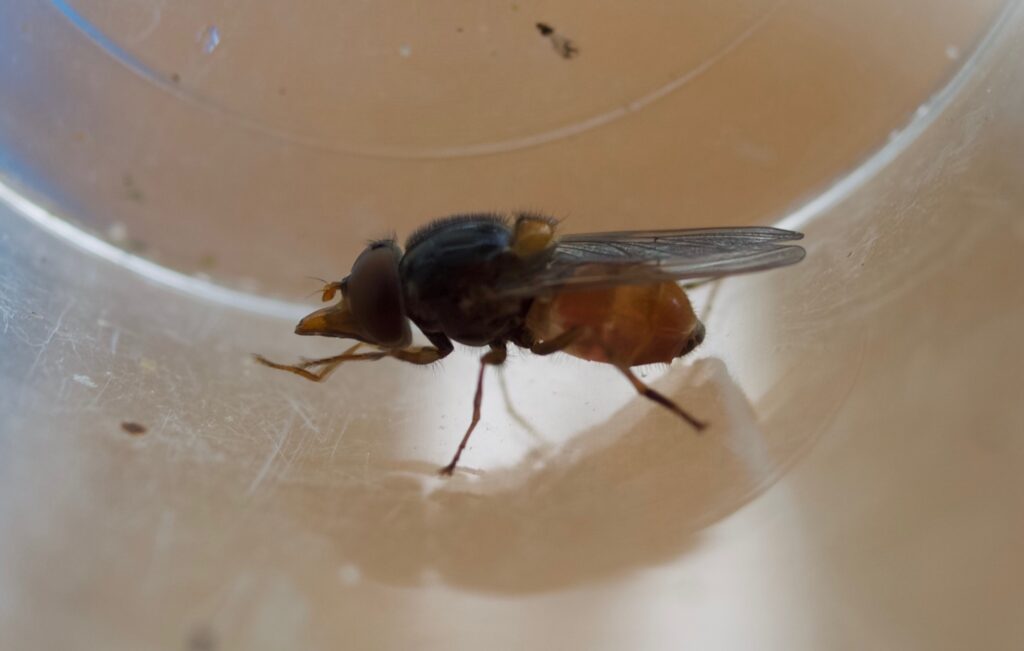
This species turned up in (was attracted to) a very dense Lagoon I created on 4th April as an experiment to determine how fast densely packed Lagoons take to rot down to liquid, and if a different suit of hoverfly species might be attracted to dense versus more liquid Lagoons.
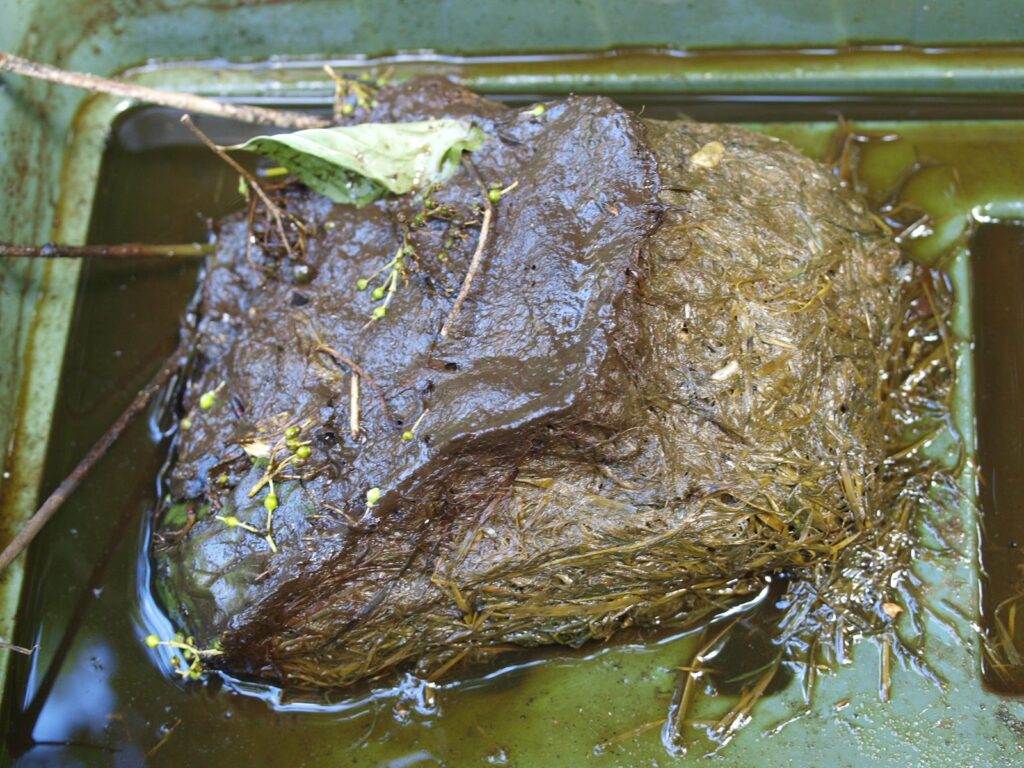
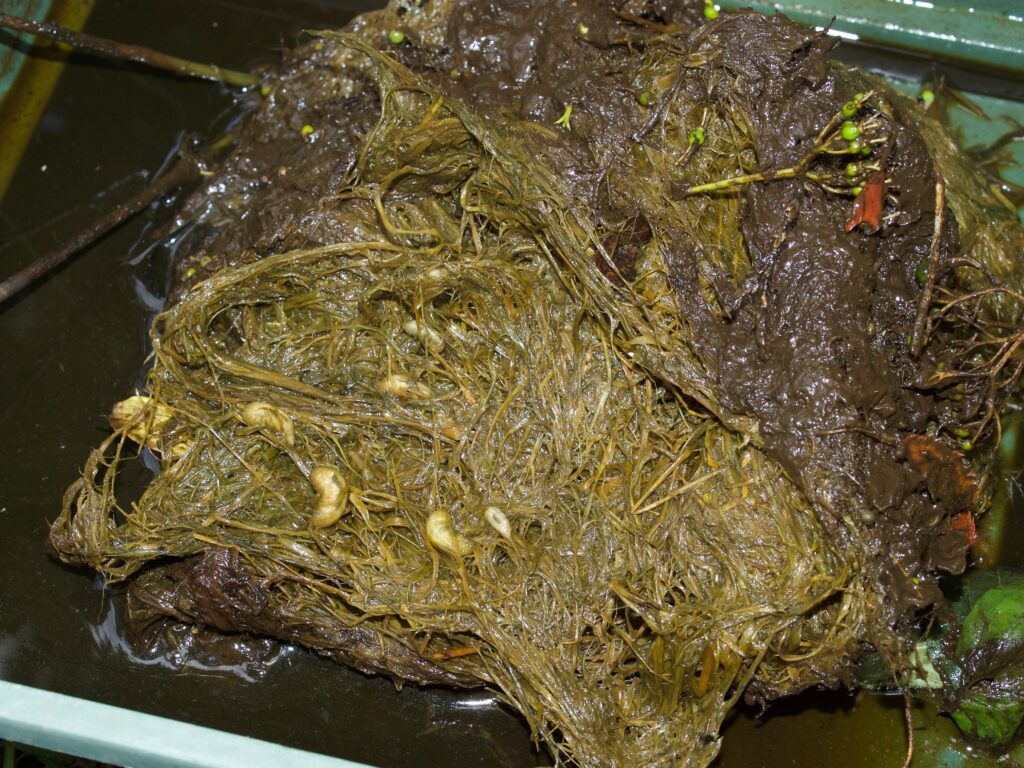
This species’ larval and pupal stages have not yet been described, we know very little about where the larval stage develops. So this is a particularly exciting discovery.
All 3 emerged within days of each other, two males (27th and 29th June) followed by one female (1st July). I fed them honey / water solution, and offered them flowers.
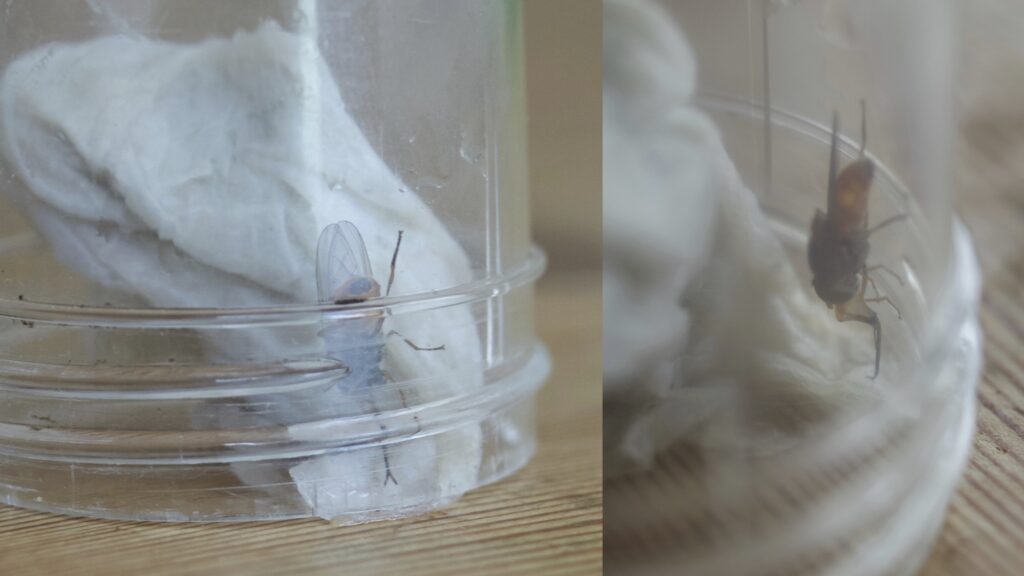
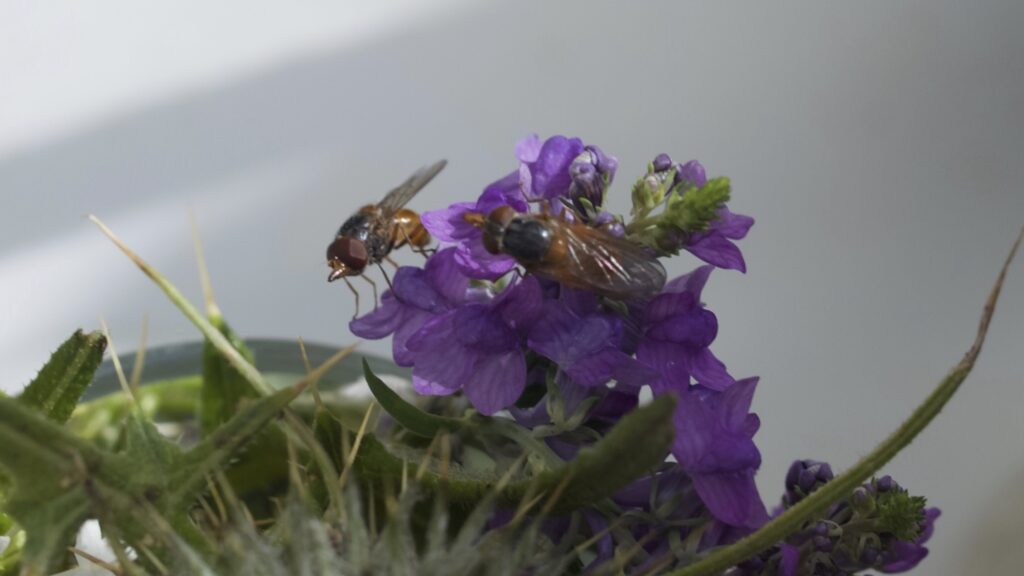
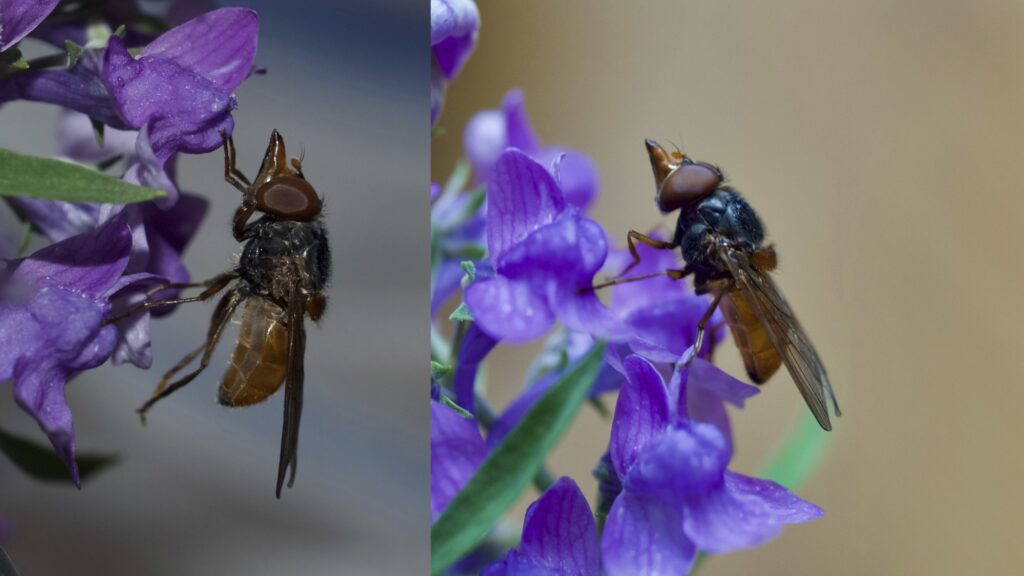
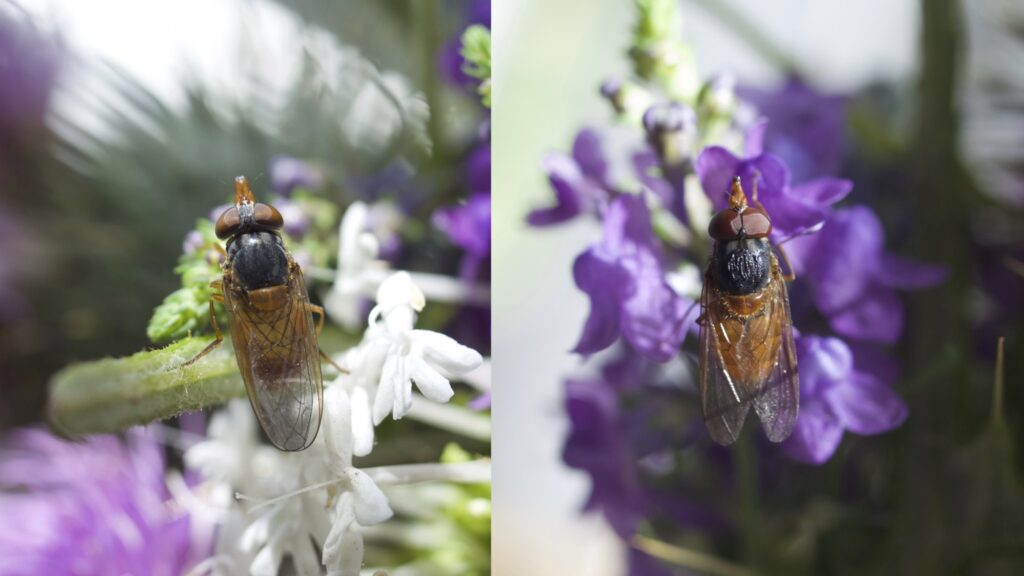
One R. rostrata female was recorded feeding on red campion in the same garden on 19th May, perhaps this was the one that oviposited a few eggs in this Lagoon which was metres away, see her below.
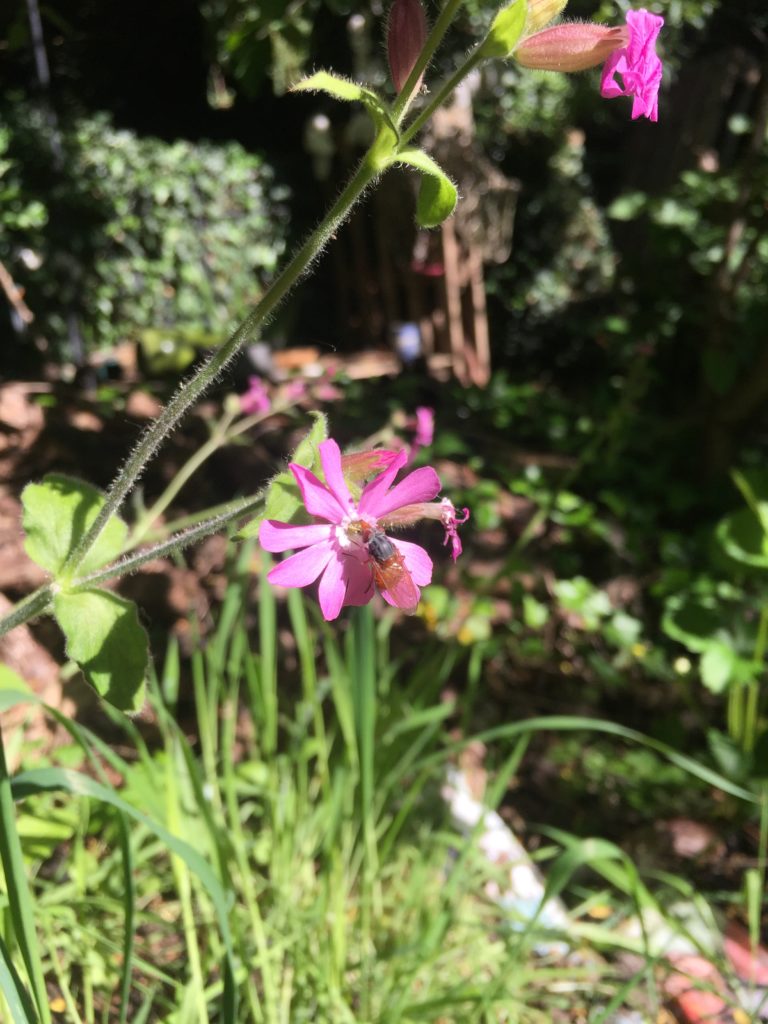
Whether it was the flowers or the Lagoon that attracted this species, either way both were visited and both are likely important, so get gardening for hoverflies!
